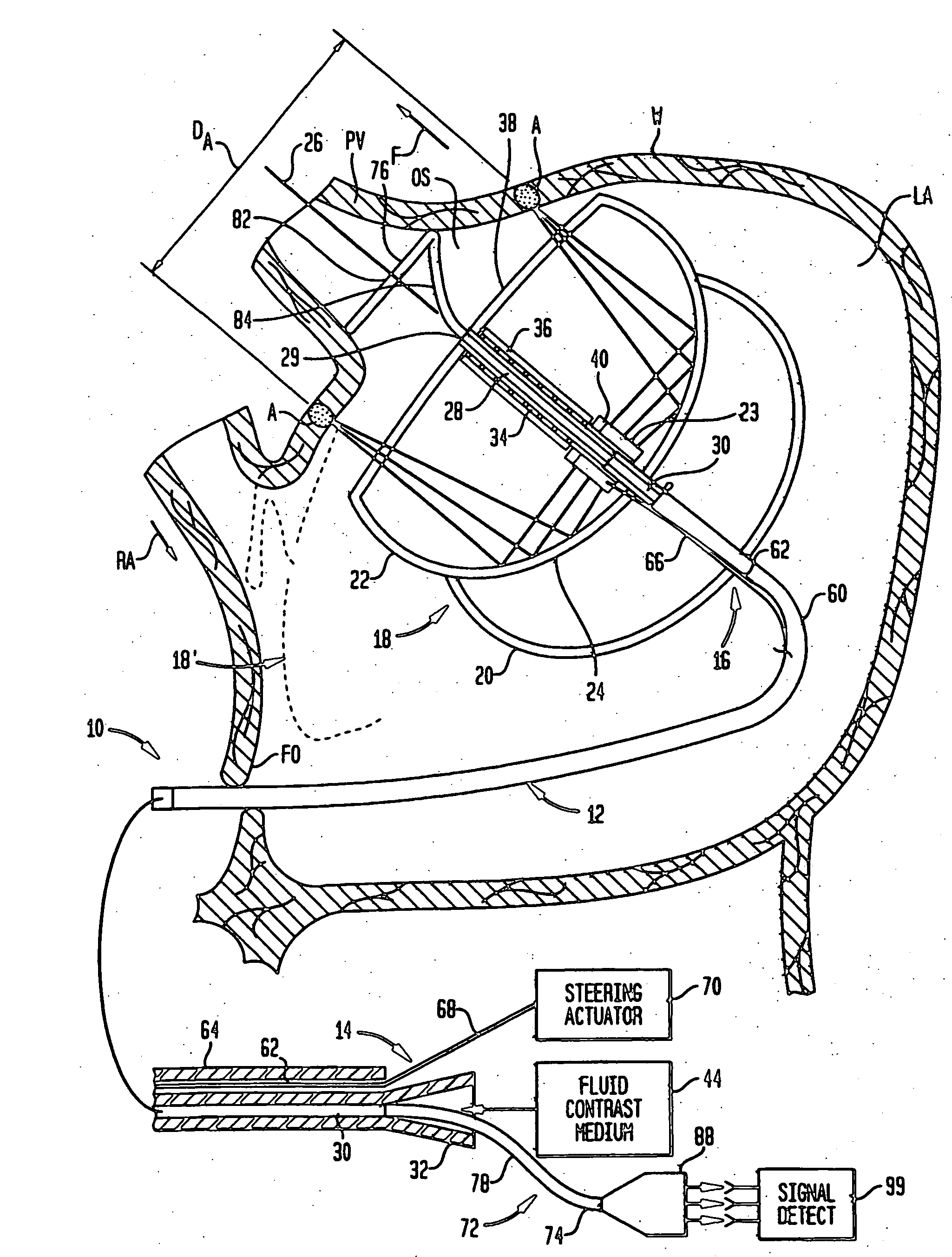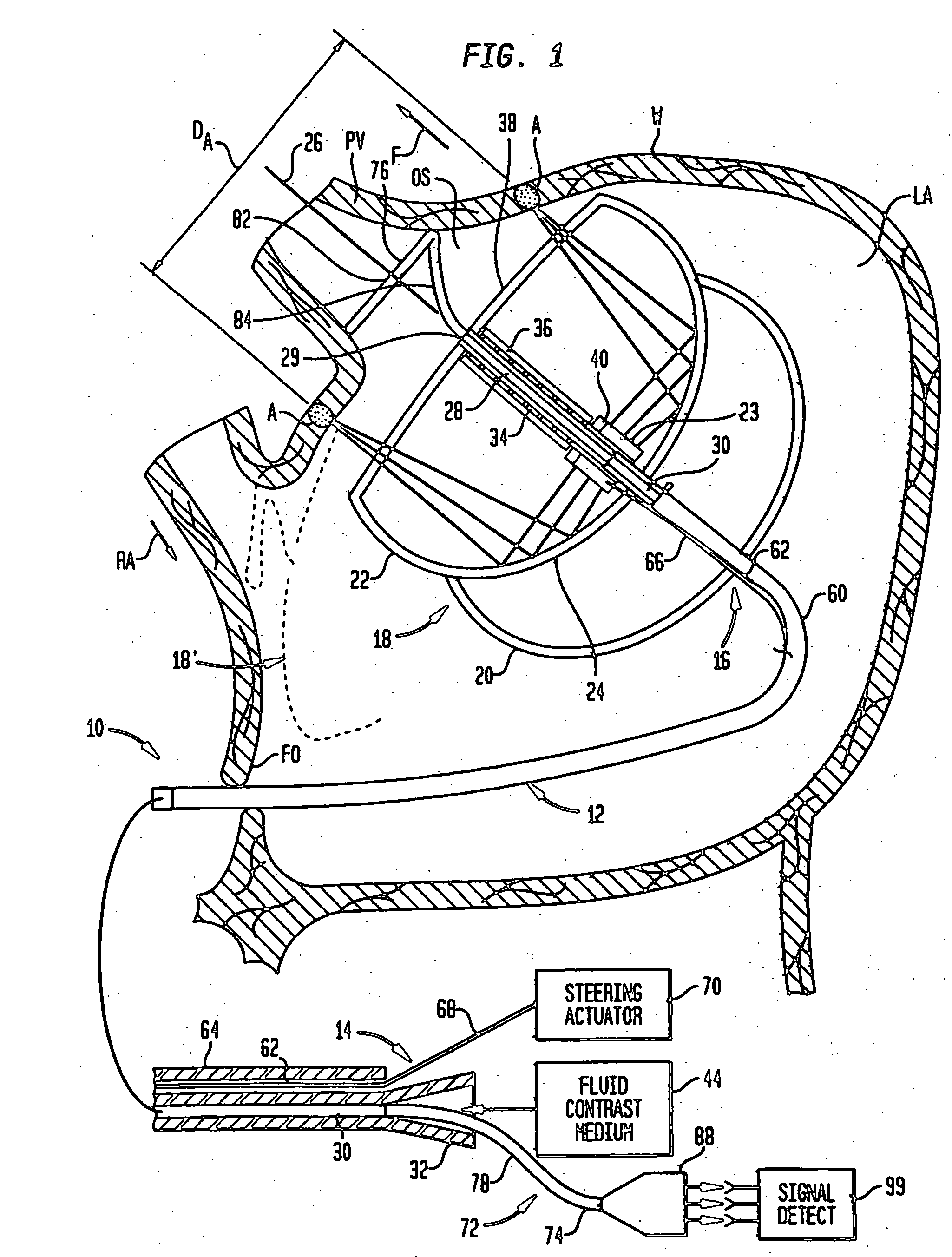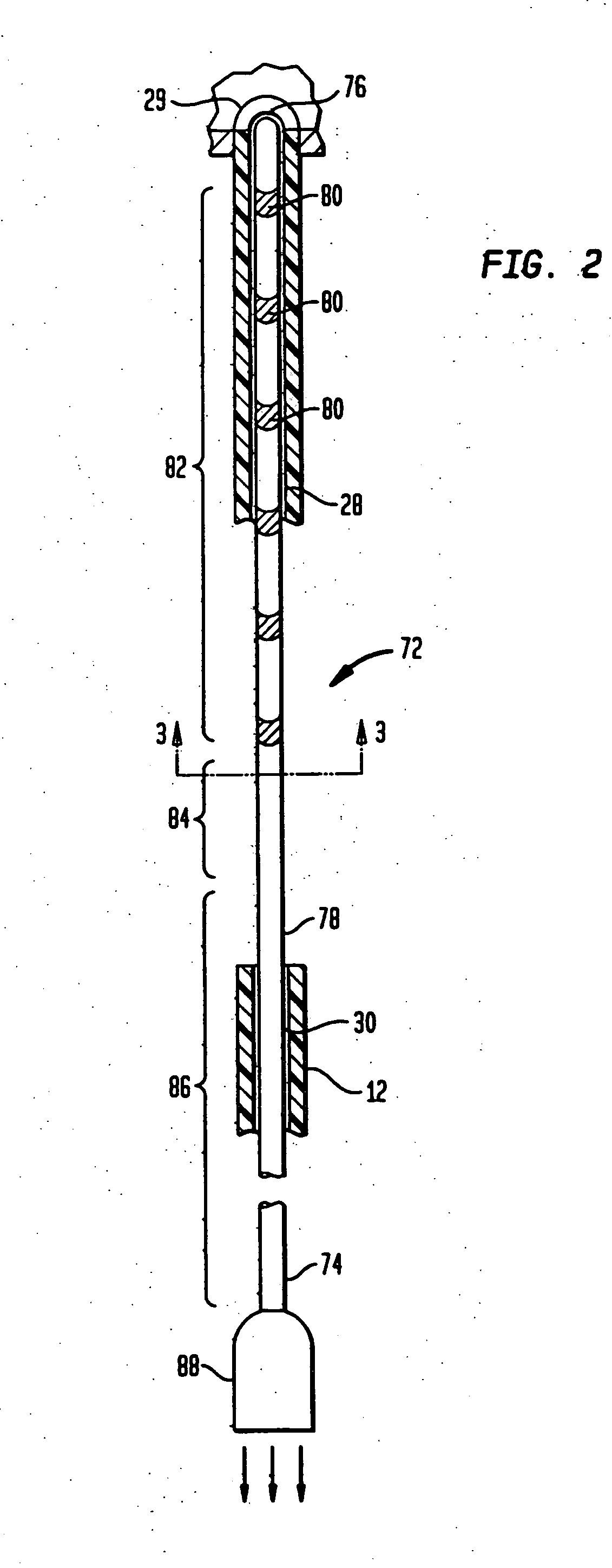Ablation Devices with Sensor Structures
a sensor and ablation device technology, applied in the field of apparatus and methods for cardiac ablation and to sensor structures, can solve the problems of limiting the placement of electrodes, the configuration of the transducer array and associated structures, and the difficulty of making the device collapse to a small diameter, and achieves the effect of facilitating introduction
- Summary
- Abstract
- Description
- Claims
- Application Information
AI Technical Summary
Benefits of technology
Problems solved by technology
Method used
Image
Examples
Embodiment Construction
[0032]As seen in FIG. 1, apparatus according to one embodiment of the invention includes an insertable structure 10 incorporating an elongated catheter 12 having a proximal end 14, which remains outside of the body, and a distal end 16 adapted for insertion into the body of the subject. As used in this disclosure with reference to structures which are advanced into the body of a subject, the “distal” end of such a structure should be taken as the end which is inserted first into the body and which penetrates to the greatest depth within the body, whereas the proximal end is the end of the structure opposite to the distal end. The insertable structure 10 also includes an ablation unit 18 mounted to the catheter adjacent distal end 16. Ablation unit 18 incorporates a reflector balloon 20 and a structural balloon 22 having a common wall 24. Reflector balloon 20 is linked to an inflation lumen (not shown) in catheter 10, which extends to the proximal end of the catheter and which is con...
PUM
 Login to View More
Login to View More Abstract
Description
Claims
Application Information
 Login to View More
Login to View More - R&D
- Intellectual Property
- Life Sciences
- Materials
- Tech Scout
- Unparalleled Data Quality
- Higher Quality Content
- 60% Fewer Hallucinations
Browse by: Latest US Patents, China's latest patents, Technical Efficacy Thesaurus, Application Domain, Technology Topic, Popular Technical Reports.
© 2025 PatSnap. All rights reserved.Legal|Privacy policy|Modern Slavery Act Transparency Statement|Sitemap|About US| Contact US: help@patsnap.com



